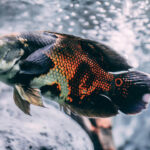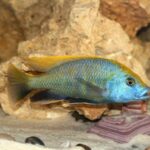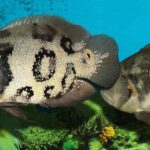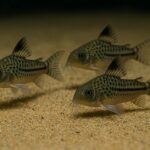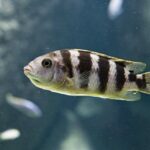If you’ve ever gazed into a well-kept aquarium and been mesmerized by shimmering schools of tiny fish darting through a planted aquascape, chances are you’ve seen tetras in action. These small, freshwater fish are beloved in the aquarium world for good reason—they’re colorful, peaceful, relatively easy to care for, and they play well with others.
But what makes tetras really special is their variety. With over 150 species to choose from, each with their own unique colors, behaviors, and quirks, there’s a tetra for nearly every type of aquarist. Whether you’re a first-timer with a small tank or an experienced hobbyist designing a larger community setup, tetras offer endless options.
Let’s dive into the most popular tetra breeds, learn what makes them shine, and explore how to help them thrive.
Why Tetras Make Great Aquarium Fish
Tetras hail from the rivers and streams of South America and Africa, where they’ve evolved to thrive in densely planted environments with soft, slightly acidic water. They’re naturally social, peaceful, and prefer to live in schools—meaning they’re happiest (and look their best) when surrounded by their own kind.
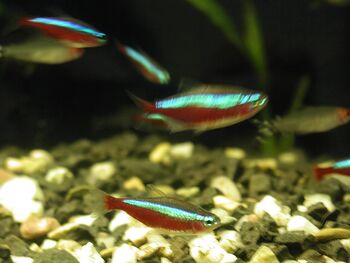
So, why are tetras so popular?
- Bright colors and striking patterns
- Peaceful temperament—perfect for community tanks
- Small size (typically 1–2 inches)
- Active swimmers that school together
- Hardy and beginner-friendly (in most cases)
Thanks to their ease of care and visual appeal, tetras are often recommended as great starter fish for new aquarists.
Popular Tetra Fish Breeds (With Care Tips!)
Let’s take a closer look at the most beloved and commonly kept tetra species. Whether you’re building a peaceful planted tank or just looking for a splash of color, there’s a tetra breed for every setup.
1. Neon Tetra (Paracheirodon innesi)
✅ A beginner favorite with classic beauty.
Quick Facts:
- Size: 1.5 inches
- Lifespan: 5–8 years
- Ideal Temp: 70–81°F
- School Size: 6 or more
Neon Tetras are a staple in the hobby—and it’s easy to see why. Their brilliant electric blue stripe and vibrant red tail give them a glow-like quality that looks stunning in groups, especially under soft lighting.
These little fish are peaceful and enjoy swimming in the mid-level of the tank. They do best in planted aquariums and are happiest when kept in schools of 6 or more.
Pro Tip: Neons can be a bit sensitive to poor water quality. Keep your tank well-maintained and stable.
2. Cardinal Tetra (Paracheirodon axelrodi)
✅ Like Neon Tetras, but even more vivid.
Cardinal Tetras are often confused with Neons, but look closely and you’ll see a difference—the red stripe extends the full length of the body, giving them a more saturated appearance.
They’re slightly more sensitive than Neons and appreciate a mature tank with very clean, soft, slightly acidic water. If you’re going for a natural Amazonian biotope setup, Cardinals are a beautiful choice.
Fun Fact: In large schools, Cardinal Tetras can create a “living ribbon” of color that flows through the tank.
3. Black Neon Tetra (Hyphessobrycon herbertaxelrodi)
✅ Understated, yet elegant.
Black Neon Tetras might not be as flashy, but their sleek black-and-white stripes and gentle disposition make them a popular pick for planted aquariums. They’re also among the hardiest tetras, making them perfect for beginners.
They contrast beautifully with brighter tank mates and prefer the company of their own kind in schools of 6 or more.
4. Rummy Nose Tetra (Hemigrammus rhodostomus)
✅ The schoolers’ schooler.
Rummy Nose Tetras are a favorite among aquascapers for their synchronized schooling. Their ruby-red noses and black-and-white striped tails make them easy to spot in a tank. They’re also one of the tightest schooling tetras, swimming in near-perfect coordination.
However, they’re a bit sensitive and should be introduced to a well-cycled tank with stable water chemistry. A group of 8–10 or more really brings out their best behavior.
Note: A fading red nose is often a sign of stress or poor water conditions.
5. Ember Tetra (Hyphessobrycon amandae)
✅ Tiny but mighty.
Ember Tetras are miniature fireballs, glowing orange-red and darting around like sparks. At under an inch long, they’re one of the smallest tetra species—and perfect for nano tanks.
They love a planted environment with gentle flow and warm water. Since they’re so tiny, pair them only with other peaceful fish (or shrimp).
6. Diamond Tetra (Moenkhausia pittieri)
✅ A sparkly mid-size option.
These slightly larger tetras shimmer like diamonds under the right light, especially the males during breeding season. Their reflective scales catch the light beautifully and offer a more “glamorous” aesthetic than most tetras.
Diamond Tetras are easy to care for but need a bit more room—at least 20 gallons. They’re peaceful, but can be fin-nippers if under-stimulated or kept in too small a group.
7. Emperor Tetra (Nematobrycon palmeri)
✅ Regal swimmers with attitude.
With iridescent hues of purple, green, and blue, and bold horizontal stripes, Emperor Tetras live up to their name. They’re slightly more confident than your average tetra and often swim individually or in loose groups.
They’re peaceful but may show subtle dominance behavior among males. These fish prefer calm, filtered water and appreciate a tank with lots of hiding places and low lighting.
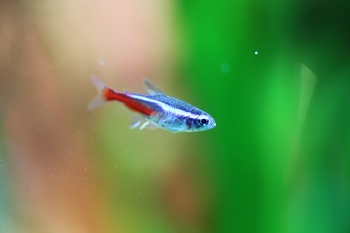
8. Congo Tetra (Phenacogrammus interruptus)
✅ The showpiece of the tetra world.
Larger and flashier than most, Congo Tetras are a dream for anyone looking to create a focal point in a bigger tank. Their rainbow-colored bodies and flowing fins give them a luxurious, almost saltwater look.
They’re peaceful but need space—at least a 30-gallon tank—and should be kept in groups of 6 or more.
Tip: These fish love open swimming space with a few plants and subdued lighting to bring out their iridescent colors.
9. Buenos Aires Tetra (Psalidodon anisitsi)
✅ Tough, active, and underrated.
Buenos Aires Tetras are not only hardy—they’re also surprisingly beautiful, with silver bodies and red fins. They’re larger and more active than many other tetras, and can be a bit boisterous in small tanks.
They’re best suited to semi-aggressive or fast-moving tank mates and need at least a 25-gallon tank. Not ideal for slow-moving or delicate fish.
10. Glowlight Tetra (Hemigrammus erythrozonus)
✅ Soft, warm glimmer for your aquarium.
Glowlight Tetras have a subtle but stunning neon-orange stripe running from nose to tail, giving them a warm glow—especially under dim or blacklight conditions. They’re very peaceful and do well in heavily planted tanks.
They’re a fantastic community fish, and best kept in groups of 6–10 or more.
11. Rosy Tetra (Hyphessobrycon rosaceus)
✅ Blush-colored beauty with elegant fins.
Rosy Tetras have a soft pinkish hue with subtle silver undertones and black-tipped fins. They’re peaceful, slightly shy, and ideal for planted community tanks. When kept in groups of 6 or more, they display gentle schooling behavior and become more confident.
They also pair well with Ember and Glowlight Tetras due to their shared temperament and size.
12. Red Eye Tetra (Moenkhausia sanctaefilomenae)
✅ A calm, adaptable tetra with a striking red eye.
This silver-bodied fish with a vivid red “eyeliner” effect is another hardy, beginner-friendly species. Red Eye Tetras are larger than Neons but less flashy—perfect if you want a calm presence in your tank without overwhelming the space with color.
They’re easygoing but should still be kept in schools to avoid boredom or fin-nipping tendencies.
13. Bleeding Heart Tetra (Hyphessobrycon erythrostigma)
✅ Romantic name, bold look.
Named for the blood-red spot on their chest, Bleeding Heart Tetras are slightly larger than many common varieties and have a more oval-shaped body. Males often display long, flowing dorsal fins.
They thrive in soft, slightly acidic water and need at least a 20-gallon tank. They’re peaceful but enjoy space to swim, so give them room to roam.
14. Penguin Tetra (Thayeria boehlkei)
✅ Sleek swimmers with a unique tail stripe.
Penguin Tetras are known for the black stripe that runs from mid-body down to the lower lobe of their tail, giving them their name. They’re peaceful, active swimmers that often school at the upper and middle levels of the tank.
They’re adaptable, undemanding, and get along well with most community fish.
15. Flame Tetra (Hyphessobrycon flammeus)
✅ A burst of color in small tanks.
Flame Tetras are aptly named—they look like tiny flickers of fire with their bright red-orange hue and silvery faces. They’re smaller than many of the species above and perfect for nano aquariums, especially planted setups.
They’re gentle, like Ember Tetras, and love being in schools of 8–10 for maximum color and confidence.
Other Noteworthy Tetra Varieties
- Serpae Tetra: Deep red with a dark dorsal fin. A bit nippy but gorgeous in groups.
- Black Phantom Tetra: Soft black body and rounded fins—ideal for a darker, moody aquascape.
- Lemon Tetra: Bright yellow with delicate fins, they’re gentle and easy to care for.
Water Conditions & Care Tips
Tetras, in general, prefer the following:
- pH: 6.0–7.5
- Temperature: 72–82°F (varies by species)
- Hardness: Soft to moderately hard
- Filtration: Gentle flow preferred
- Lighting: Dim to moderate
- Tankmates: Peaceful, similarly-sized species
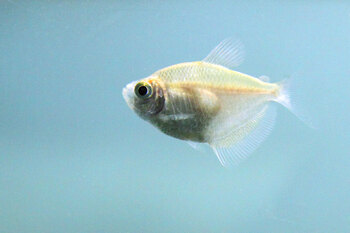
Quick Care Checklist:
✅ Weekly water changes (25–30%)
✅ Schooling—never keep alone
✅ Avoid aggressive fish or fin-nippers
✅ Feed high-quality flakes + frozen/live treats
✅ Keep tanks covered—they can jump!
Tetra Tankmates: Who Plays Nice?
Most tetras do well with:
- Corydoras catfish
- Rasboras
- Guppies
- Mollies
- Gouramis (dwarf species)
- Peaceful barbs
- Shrimp and snails (for nano tanks)
Avoid larger or aggressive fish like bettas (with long fins), cichlids, or fast fin-nippers like Tiger Barbs unless the setup is carefully balanced.
Tetra Behavior: What to Expect
Tetras aren’t just pretty swimmers—they’re interactive, curious little fish with fascinating habits when you pay attention.
Here are some of the charming behaviors you might see:
-
Schooling: Tetras swim in groups for safety and social bonding. When happy, they’ll move in synchronized bursts.
-
Color Flashes: Excited or mating males often “flash” their colors brighter—especially in Ember or Cardinal Tetras.
-
Territorial Flirting: Males may chase each other in harmless displays to impress females or establish social pecking orders.
-
Nose-flicking or darting: In tight-knit schools, you’ll often notice sudden synchronized movements—it’s a social cue, not panic!
Fun to observe: Watch a group of Rummy Nose Tetras when feeding time hits—they’ll all dart in unison, like an underwater dance troupe.
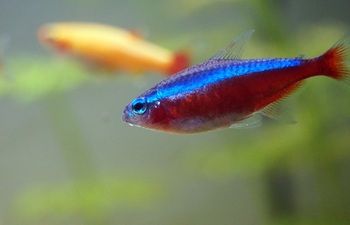
Frequently Asked Questions (FAQs)
Q: Do tetras need to be in groups?
A: Absolutely. Tetras are social schooling fish and should be kept in groups of at least 6 (preferably more) to reduce stress and encourage natural behavior.
Q: What size tank do I need for tetras?
A: It depends on the species. Most can live comfortably in a 10–20 gallon tank, but larger varieties like Congo or Buenos Aires Tetras need 25–30 gallons or more.
Q: How often should I feed tetras?
A: Feed small amounts once or twice daily. Mix it up with flakes, pellets, and occasional frozen foods like bloodworms or brine shrimp.
Q: Can I mix different tetra species together?
A: Yes, but it’s best to keep at least 6 of each species. Some mix better than others—avoid pairing aggressive or fast-swimming tetras with delicate species.
Q: Are tetras good for beginners?
A: Definitely! Most tetra species are beginner-friendly as long as their water conditions are stable and they’re kept in schools.
Final Thoughts: The Beauty of Tetras
There’s something almost magical about a school of tetras weaving through aquatic plants. With their glittering colors, gentle personalities, and wide variety of species, tetras continue to be a top choice for aquarists around the world.
Whether you’re drawn to the familiar Neon Tetra or want to try something a bit more exotic like the Congo Tetra, these fish offer beauty and joy in every fin flick.
So, ready to build your tetra dream tank? With the right setup, some thoughtful planning, and a little care, your home aquarium can become a peaceful slice of the Amazon—no passport required.


